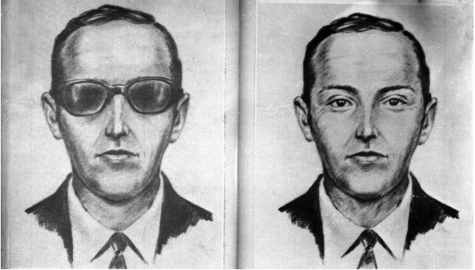The Mysterious Death of Alexander Grant
Case Details:
Name/age: Alexander Maxwell Grant, 19
College: Boston College, Chestnut Hill, Mass.
Physical Description: 6 feet 2 inches, 190 pounds, brown hair, brown eyes.
Last seen: 03/05/11, Skidmore College, 146 Church Street, Saratoga Springs, N.Y.
Recovered: 03/8/11, 12:28 p.m., Putnam Creek, Saratoga Springs, N.Y.
Investigating Agency: Saratoga Springs Police, 518-584-1800.
Alexander Maxwell Grant was born in Lake Forest, Illinois and grew up in Briarcliff, a small town in upstate New York. He graduated with high honors from Briarcliff Manor High School in 2009. While attending, he was a member of the international Tri-M Musical honors society, and also won the regional prize for Mathematics in the nationwide Intel Science and Talent Search.
Grant enrolled at Boston College as an economics major and secured a three-year internship at Risk Resources, LLC, a financial advisory company in New York City. He was also involved in what appears to be the master list of good charities: City Meals on Wheels, the Robin Hood Foundation, Doctors without Borders, and Friends of the Rockefeller State Park Preserve. Somehow, because I’m pretty sure this kid didn’t sleep, he found time to play in a band called the Jays that performed in venues in and around New York City. So, by all accounts, Grant was a high-achieving student who excelled both in and outside of the classroom. His family described him as a person of great promise, humor, warmth and sensitivity.
All of his accomplishments underscore how deeply out of character the nature of events leading up to and including his untimely death were.
Grant was last seen on ,March 5, 2011, visiting a friend at Skidmore College. Grant, who was on spring break, attended a massive Project X style house party that took place at two different locations: 146 and 150 Church Street in Saratoga Springs, New York. There were over 300 people in attendance. Grant’s friends at the party confirm he arrived at about 11 p.m. and left around 11:30 p.m. His friends were not clear where he was headed.
At around noon on the day after the party, Saratoga Springer Police Department (SSPD) officers responded to a call about a break-in at a medical office building at 3 Care Lane. When police arrived, they found a broken window and a significant amount of blood inside the office, but nothing had been disturbed (apart from the window) or stolen.
A surveillance tape showed that at 1:15 a.m. that same morning, a young white male (later identified as Grant) broke into the office building by kicking his foot through a window. The footage showed the young man—wearing a pair of boxers, a white long-sleeved shirt and one sock—kicking the window, sustaining a significant cut on his foot in the process and proceeding to climb through it. The young man stayed in the lobby for approximately 45 minutes and did not try to enter the offices. He left the building at 2 a.m.
This behavior implies a level of disorientation that is difficult to reach after 30 minutes at a college party. When he arrived at the medical office, after busting through the window, he just sort of hung out in the lobby for 45 minutes. That amount of time, now almost three hours after he stopped drinking, is enough time to sober up somewhat.
At about 5 p.m., eighteen hours after Grant had left the party, three of Grant’s friends arrived at the SSPD to report him missing. The description they gave of Grant matched the individual in the surveillance video from 3 Care Lane.
Saratoga Springs police and fire department personnel then returned to the medical building and began a search of the surrounding area. One sock and a pair of pants were discovered about 150 feet from the building. The pants contained identification belonging to Grant—still missing were his shoes, cell phone and Grant himself.
While there was blood inside the medical office building, heavy rain had fallen for several hours before the break-in was discovered, so any blood trail, which there would have been, was washed away well before police arrived.
On the evening of March 6, soon after authorities learned that Grant was missing, search crews began combing a wooded area north of Church Street along nearby railroad tracks. The search was conducted both on foot and on ATVs. Thermal imaging equipment was used without success.
According to a Saratoga Springs Police press release, “some footprints in the snow were noticed by searchers in the wooded area Sunday night; however, snow had begun falling so rapidly that the tracks were soon covered over by fresh snow.”
On March 7, nearly 50 emergency personnel from several different agencies looked for Grant from 9 a.m. to 6 p.m. through the fresh twelve inches of snow that blanketed the area. Attempts to locate Grant using tracking dogs and a state police helicopter were to no avail. The police even tried to ping the GPS on Grant’s cell phone but could not get a hit.
On Tuesday, March 8 at 11 a.m., firefighters found Grant’s body at a sharp bend in Putnam Creek about 300 yards north of Sunnyside Gardens off Route 9 North. The body was entangled in the underbrush and submerged in about four feet of open water under an ice shelf. The location was about a mile away from the medical building where he was last seen. Due to the recent downpours and snowmelt, Putnam Creek was more hostile than usual and had a swift current at the time of the discovery. However, they did not suspect foul play when authorities arrived on the scene.
About two dozen members of the city police, firefighters, state forest rangers and state police were at the scene. At 12:28 p.m., city firefighters wearing special cold-weather gear recovered the body, clad in only shorts, a shirt and one sock (exactly what Grant was last seen in on the surveillance footage at the medical office). The body was taken to Albany Medical Center Hospital, where a forensic pathologist performed an autopsy.
The autopsy determined Grant died early on Sunday morning from drowning with hypothermia. When Grant left the party, the temperature outside was between 28 and 30 degrees. Saratoga County coroner John DeMartino told The Daily Gazette that while Grant had lost quite a bit of blood at the medical office, it would not have been enough to cause his death, and “His disorientation would be more from hypothermia, or if he was taking drugs and alcohol.”
The assumption that law enforcement, the coroner, and likely anyone reading this made is that Grant must have taken something that impaired him and sustained that level of disorientation for hours. So they did a toxicology screening, and it showed no indication of narcotics in Grant’s system. The coroner did not believe the results the first time, so he ran them again. Both tests yielded negative results.
This doesn’t mean that Grant was sober, though; the final autopsy showed that he had a blood-alcohol content (BAC) of 0.16 at the time of his death. While that is pretty drunk, pretty much everyone involved in his case agrees that it’s not wander-away-from-a-party-and-kick-through-a-window-in-your-bare-feet drunk.
The short but frustrating answer to just how drunk Grant was depended on how frequently he drank. Your alcohol tolerance measures how many drinks it takes you to get to a certain point. Your blood alcohol tolerance determines what happens when you hit a certain point — an extremely inexperienced drinker will blackout at a blood alcohol content of 0.15. The average person starts to be very seriously intoxicated at 0.2, and alcohol poisoning sets in at 0.35.
So with all that in mind, it is difficult to know if reaching a BAC of 0.16 indicated a wild night for Alexander or if that was a catastrophic black-out night for him. Given that Grant had nothing in his system other than alcohol, authorities are still investigating what affected his body or led to the circumstances of his death.
Police estimate that Grant died a few hours after he was seen on the surveillance video. They believe Grant was walking somewhere upstream when he fell into the water upstream from where he was found while walking in the dark in knee-deep snow. His body then got tangled in underbrush beneath the waterline and got stuck at the river bend. To this day, no one is certain about what Grant did or where he was for the two hours between when he left the party and when he broke into the office.
Officially, Grant’s death has been ruled an accident. Still, there is no clear explanation for why a high achieving young kid with great social support systems, lots of friends, with no history of mental illness, no record of behavioral problems with no drugs in his system and a not catastrophic BAC decided to leave a party, take his pants off, decided to break into a medical office and then fall into a creek.
Authorities believed that Grant removed his shoes, pants and a single sock because of a phenomenon called paradoxical undressing, which is a symptom of late-stage hypothermia. If you become cold enough, for long enough, your brain starts to short circuit and tell your body that you’re not cold; actually, you’re hot. So hot that the victim begins to strip their clothes. Thus further exposing the individual and making it more likely to succumb to the elements. As I said, late sage.
But that doesn’t explain it because he left two locations with heat; one of them was full of his friends. The Grant family said in a statement that his death was a tragic accident.
The Saratoga County District Attorney’s office is investigating whether anyone at the party had served alcohol to Grant. They may be charged with unlawful dealing or endangering the welfare of a child; both are misdemeanor offenses that carry punishments of up to one year in jail.
In addition, the Grant family filed a lawsuit against nine individuals who hosted the party in hopes that it would force them to come forward with any information they might have been withholding. However, the charges were dropped after it became clear that none of the accused had any additional information into the death of Grant.
Some people attribute Grant’s death to the Smiley Face Killer, which is a theory that retired law enforcement officials have floated. As the theory goes, since 1997, dozens of college-age men have died in undetermined or accidental drownings across 25 cities in 11 states. Former NYPD detectives Kevin Gannon, Michael Donovan, Anthony Duarte and professor of criminal justice Dr. Lee Gilbertson believe these drownings were homicides committed by a gang of serial murderers.
The Saratoga Springs Police Department has not commented on this theory.











































































































































































































